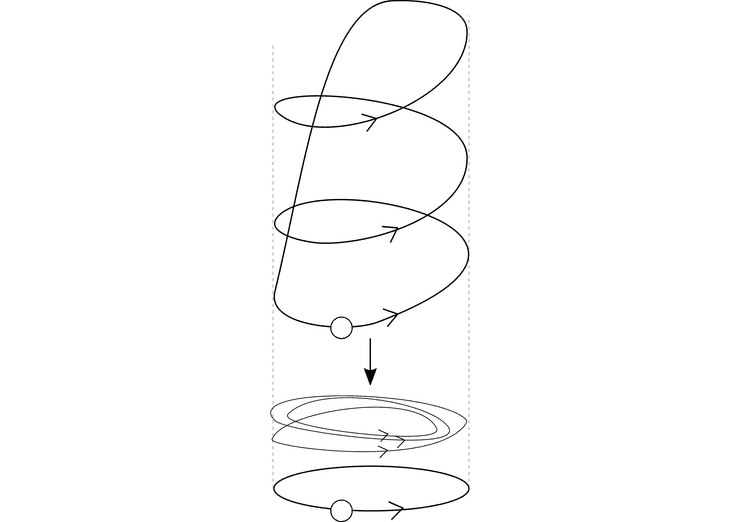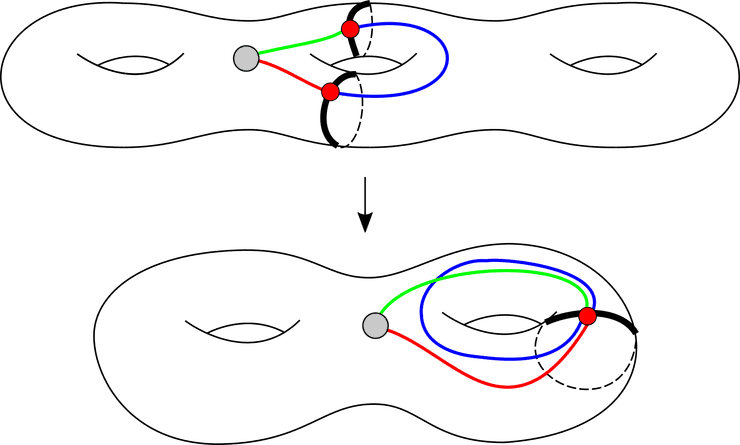Compact Covers of Orientable Surfaces
The following question was asked to my friend during an interview for the Oxford PhD program:
(Characterize the Compact Covers of Compact Orientable Surfaces) Given a compact orientable surface , what do its (compact) covers look like? More specifically, if has genus , what are the conditions on if another compact orientable surface of genus covers , i.e what are the possible pairs ?
The answer came pretty fast because I had been thinking about the same problem for different reasons. For some reason it took me a while to feel at ease with the lifting criterion:
(Lifting Criterion) Suppose we are handed a covering space and a map , with path-connected and locally path-connected. Then there exists a lift of if and only if .
I think the biggest problem for me was the fact that I intuitively thought the induced map of a covering map ought to be surjective and not injective.
The proof of injectivity is very easy: a loop upstairs in the cover is in the kernel of if it is represented by a loop with a homotopy of to the trivial loop. There is a unique lift of that homotopy which goes from to a constant loop (lifts of constant paths are constant), done.
But I was still weirded out precisely because of the examples we’re about to cook up to answer the original question, e.g. the genus 3 surface covering the genus 2 surface. It seems like there are a lot more loops in the genus 3 surface than in the genus 2 surface (I mean, there are more), shouldn’t the induced map be surjective? The answer is no, because of the following very important point: we’re looking at based loops. Before going over the examples, notice that the situation is clear for -sheeted covers of the circle, the image subgroup of the induced map on the fundamental groups is just the subgroup , as seen in the following picture for .
So injectivity is very natural on that example, but I thought less so for surfaces. Let’s take a look at the following example to see how things work for surfaces.
First off, the genus 3 surface covers the genus 2 surface with the two bold black circle identified and the two “branches” being projected to the genus 2 surface. Looking at the loop going once around the middle circle[^Pick one of two directions and stay consistant] of the genus 3 surface (the covering space) we see that by construction this yields a loop going around twice in the genus 2 surface downstairs. That way we see that the image subgroup under here would be for this example.
The previous construction can be adapted for of genus : pick any handle and make it the “core” handle of the covering surface. Then add say branches of genus to get the -sheeted cover of . Identification around the core handle is done in the same fashion.
This gives us the following result and answers the original question:
(Characterization of the Compact Covers of Compact Orientable Surfaces) Given a compact orientable surface of genus , the compact orientable covers of are exactly the surfaces of genus , .
Proof. The existence is given by our previous discussion and the previous figure. Unicity follows for Euler characteristic considerations since in a -sheeted cover, the cardinalities of the set of vertices, edges and faces are all multiplied by .


